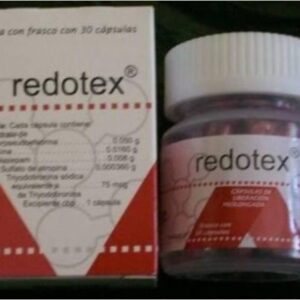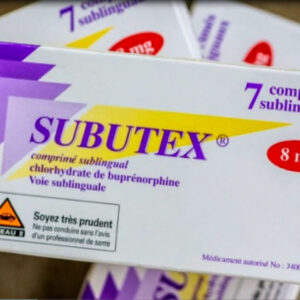Buy Original Anhui Anke Biotechnology (Group) Co., Ltd Ansomone (HGH)
Biotechnology is the application of biological processes to create technologies and goods that help us live better and protect our ecosystem at its most basic level.
$800.00 $850.00
Human Growth Hormone Biotechnology
Human growth hormone is perhaps one of the newest compounds used by athletes and bodybuilders seeking to gain a broader advantage in the area of physique and performance improvement. Human growth hormone is what is known as a protein hormone that is produced naturally and endogenously by the human body and is secreted in the pituitary gland.
The neurosecretory cells of the hypothalamus release a hormone known as GHRH (growth hormone-releasing hormone, also known as somatocrinin) and another hormone known as GHIH (growth hormone inhibitor hormone) in the pituitary gland, which it then makes and releases your storage of human growth hormone in the blood.
Human growth hormone belongs to the family of protein hormones Somatotropin, which makes it very close to the hormone prolactin, which also belongs to the family of hormones Somatotropin. The total family of somatotropins includes CSH1, CSH2, CSHL1, HGH (human growth hormone), PRL (prolactin), and hGH-V. Human growth hormone consists of a structure of 191 amino acids.
Human growth hormone, as its name suggests, is an essential hormone in the role of many different growth mechanisms and functions in the human body. However, the activity of human growth hormone is not limited to this function but has a large number of different services and effects on many different processes of the body, including the regulation of certain aspects of metabolism, regeneration and growth cellular, as well as healing. And repair, and more.
Many of the functions of the Human Growth Hormone are well known, but they also have properties and services that are not yet known or that are not well understood.
The primary effects of the Human Growth Hormone on the body’s growth functions are found in three main areas: bone growth, skeletal muscle growth, growth of the internal organs and healing /growth/repair of the connective tissue, such as tendons, ligaments, and joints. In terms of its effects on metabolism, it supports the efficient functions of proteins, carbohydrates, fats, and the metabolism of vitamins/minerals.
Within medicine, human growth hormone has been used successfully as a treatment for many different types of disorders and ailments. The first and most important use of HGH medically is for the treatment of dwarfism with pituitary deficiency, a condition in which individuals do not grow adequately due to the lack of endogenous production of human growth hormone.
This is most common during childhood or adolescence, where synthetic human growth hormone is administered to increase growth as much as possible before the middle stages of youth, so the growth potential becomes increasingly limited. It is also used for similar conditions in adults as well.
Medically, human growth hormone is also used for the treatment of adults with human growth hormone deficiency, where adults produce insufficient levels of GH, and synthetic exogenous human growth hormone is administered to restore levels in the range normal (preferably in the field of what a young adult possessed to regain youth and show anti-aging effects so commonly attributed to human growth hormone).
Finally, exogenous human growth hormone therapy is used in the treatment of muscle wasting related to AIDS / HIV (or as a result of many other diseases). There are other conditions in which human growth hormone is occasionally used for treatment, such as the promotion of accelerated healing in burn victims.
History of Human Growth Hormone
Somatropin is the name of the synthetic Human Growth Hormone synthesized using recombinant DNA synthesis (rDNA) technology by which viruses are inserted with the genetic code (i.e., the plan) for the creation of GH. Petri dishes containing strains of e.coli bacteria are then infected by bacteria (the genetic code is injected/inserted into bacteria by viruses).
Necessarily, these bacteria are now “tricked” into manufacturing the human growth hormone as their sole purpose determined by their new genetic programming. The resulting somatropin (rHGH, AKA, recombinant human growth hormone) is 100% identical to the human growth hormone that is endogenously manufactured by the pituitary gland in every human being.
There is no difference between rHGH and HGH built in a natural endogenous way. This is how human growth hormone is manufactured today, and recombinant DNA synthesis technology was successfully designed in 1979 by Genentech and has since been used for the synthetic manufacture of all kinds of complex proteins and protein hormones.
However, this is not how human growth hormone was made and used before the 1980s. The initial preparations of human growth hormone before rDNA technology in the 1980s were through human growth hormone extracted from the pituitary glands of human cadavers. With this technique, 1 mg of human growth hormone could be successfully removed from the pituitary of the dead body. It was in 1958 when the first use of human growth hormone extracted from corpses was published. Soon after, HGH of cadaver origin was commercialized until 1985, when rDNA technology replaced it.
However, more significant was the fact that in 1985, the FDA decided to ban human growth hormone derived from cadavers because, during the extraction process, it was impossible to filter 100% of all other possible contaminants. The result was that several batches of human growth hormones derived from corpses were found to be contaminated with prions (specific misfolded proteins that cause neurological damage) that ended up causing Creutzfeldt-Jakob disease (CJD). This was a very deadly brain disease that several patients treated with human growth hormone had succumbed. Approximately 26 patients who were given human growth hormone derived from corpses had contracted CJD.
Soon after, as mentioned above, the rDNA technology had been developed, and this form of synthesis resulted in a 100% pure hormonal product with no possibility of contaminants. The first preparation of human growth hormone marketed with synthetic rDNA was known as Somatrem and Protropin. Protropin contained a slight variation in its peptide structure that deviated from human growth hormone, but was almost 100% identical and had all the same effects on the body. In 1987, Vitrumaceuticals of Sweden had developed the first synthetic Human Growth Hormone molecule that was 100% identical to that of Human Growth Hormone naturally produced endogenously in the body.
Effects of Growth Hormone on Different Tissues
HGH has shown a wide, vast, and varied range of effects. It is a hormone that is anabolic in muscle tissue and has been shown to increase both the size (hypertrophy) and the number of muscle cells (hyperplasia). The interesting fact about human growth hormone is that its ability to generate a much higher amount of hyperplasia on hypertrophy is very favorable among athletes and bodybuilders, since an increase in the number of muscle cells (hyperplasia) to the rise in the size of muscle cells (hypertrophy) is always favored due to the fact that the newly created muscle cells remain permanently (more or less). Size gains as a result of hyperplasia will continue indefinitely after these growth effects.
Controversy About the Effectiveness of the Human Growth Hormone
A hotly debated issue is whether or not the Human Growth Hormone is really useful in terms of improving physique and performance, and if indeed it is an effort and a worthwhile investment for those seeking to enhance their physical performance and / or sports While this will be discussed later in the section on doses and cycles of human GH of this profile, the truth of the matter is that several studies have shown that the use of human growth hormone results in a pleasant weight gain and Increased lean mass, is a wrong choice to gain strength.
In addition, it has been shown that human growth hormone used alone (without anabolic steroids stacked with it) will typically only result in dramatic fat loss, and that to experience the spectacular gains in muscle mass, one should use human growth hormone with anabolics Steroids or human growth hormone should be used long-term (at least 6 months of constant use).
Studies in patients with AIDS / HIV who are administered human growth hormone have shown that the anabolic effects are significant in these individuals. However, the context should be considered here, since studies conducted in healthy adults will result in results different from studies undertaken in fragile patients with HIV / AIDS. After its first growth in popularity during the 1980s, a large number of misconceptions, myths, and rumors persisted about its properties and its use, where it was initially thought to be the most anabolic compound available. With an ever better understanding of human growth hormone compared to that of 30 years ago and all the clinical studies that have been done, we have a better understanding of it and that the earlier myths of the 1980s were not exactly right.
As a result, Growth Hormone today is mainly used for its dramatic fat loss effects, which manifest themselves immediately after first use. Anabolic effects on muscle tissue, as indicated above, require at least six months of constant use (due to the slow and continuous accumulation of HGH and IGF-1 in the body) before they can be experienced. Therefore, the general conclusion when it comes to human growth hormone is that it is considered a much weaker substance to improve performance and physique than anabolic steroids, and should be used in a particular way to get muscle growth and the strength gains of that. Essentially, human growth hormone is a compound that should only be used by advanced athletes and bodybuilders and is considered a useless compound for beginners.
This is because the majority of advanced anabolic steroid users have advanced so much in their progress and training that they have reached more or less a “dead end” for their growth, regardless of the effort or the compounds used.GH can help a person overcome this “dead end” and, therefore, this is the reason why Growth Hormone should be considered an advanced compound in the arsenal of any highly advanced or experienced athlete.
| Dosage | 10 IU/vial |
| Total amount | 10 vials/box |
| Component | Human Growth Hormone 191 Amino Acid |






There are no reviews yet.